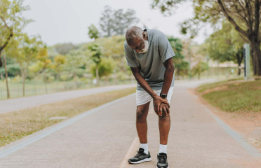Brutal Reality Exposed: Is It Hard to Walk with Fibromyalgia or Is It All in Your Head?
Is It Hard to Walk with Fibromyalgia? Exploring the Truth Behind the Pain
Living with fibromyalgia often feels like navigating a maze of invisible symptoms. Among the most distressing complaints reported by those with this condition is the difficulty of walking. This isn’t just about pain in the legs or feet—it’s a complex blend of muscle tenderness, joint stiffness, neurological confusion, and overwhelming fatigue that can turn even short walks into monumental challenges.
So, is it hard to walk with fibromyalgia? For many, the answer is a resounding yes. But the reasons behind this difficulty go far deeper than sore muscles. Understanding these underlying causes can help both patients and caregivers address the symptoms more effectively.
Why Walking Feels Difficult for People with Fibromyalgia
1. Chronic Widespread Pain
One of the hallmark symptoms of fibromyalgia is chronic widespread pain. This pain isn’t limited to specific areas but often radiates through the body. Walking requires coordinated effort from multiple muscle groups, and when every step sends shockwaves of discomfort through your limbs, even short distances can feel insurmountable.
This kind of persistent pain can cause the body to adopt unnatural walking patterns or postures, leading to more strain and, ultimately, increased discomfort. In time, it may lead to mobility limitations if not managed appropriately.
2. Muscle Stiffness and Weakness
Many individuals with fibromyalgia wake up each day feeling as if they’ve run a marathon during the night. Their muscles are stiff and weak, especially in the morning or after long periods of rest. This stiffness can make it hard to start moving and even harder to sustain a walking pace.
Legs may feel heavy or unresponsive, and the effort needed to lift and move them can be mentally and physically draining. These muscle-related difficulties also increase the risk of falls and imbalance.
3. Fatigue That Goes Beyond Tiredness
The fatigue associated with fibromyalgia isn’t the kind that resolves with a good night’s sleep. It’s a deep, persistent exhaustion that affects every system in the body. For those with fibromyalgia, walking can deplete already low energy reserves, making it a physically and mentally exhausting experience.
This kind of fatigue also limits endurance. Even individuals who used to walk or run regularly may find themselves winded after just a few steps.
4. Balance and Coordination Issues
Many people with fibromyalgia report feeling unsteady on their feet. This is often linked to a condition called proprioception dysfunction, where the brain has trouble interpreting spatial positioning and movement. In practical terms, this means your body may not react as quickly or effectively to changes in terrain or motion, making walking feel unsafe or awkward.
Additionally, medications used to treat fibromyalgia, such as muscle relaxants or certain antidepressants, may have side effects that contribute to dizziness or impaired coordination.
5. Neurological Sensitivity and Overstimulation
The central nervous system in fibromyalgia patients is often in a state of hyperarousal. Normal sensations, such as the pressure of shoes against the feet or the act of shifting weight from one leg to another, can be perceived as pain. This heightened sensitivity can make walking not only painful but mentally overwhelming.
Environmental stimuli—like crowds, bright lights, or loud sounds—can also overload the nervous system, increasing discomfort and discouraging outdoor walks or public mobility.
Psychological Impact on Walking Ability
Fibromyalgia doesn’t only affect the body—it deeply impacts the mind. Depression, anxiety, and cognitive fog are frequent companions. Fear of pain, falling, or being judged can cause individuals to avoid walking altogether. Over time, this avoidance can lead to deconditioning, where muscles lose strength from lack of use, further making walking harder.
This psychological component creates a vicious cycle: fear leads to less movement, which causes more pain and stiffness, which then reinforces the fear.
Adaptive Strategies to Improve Mobility
While walking with fibromyalgia is undeniably difficult, there are strategies that can make it more manageable and even enjoyable.
1. Start Small and Build Up
Instead of pushing through long walks, start with short, manageable sessions. Even five-minute strolls can be beneficial. Gradually increase the duration based on your comfort level.
2. Use Supportive Devices
Canes, walking poles, or supportive shoes with cushioned soles can offer balance and reduce impact on joints. There’s no shame in using tools that help you move more comfortably.
3. Incorporate Gentle Stretching
Gentle stretches before and after walking can improve flexibility and reduce stiffness. Focus on hamstrings, calves, and lower back to support the muscles most used during walking.
4. Mindful Movement Practices
Activities like tai chi or yoga can help reconnect the mind and body. These slow, controlled movements build strength, improve coordination, and offer mental clarity.
5. Listen to Your Body
Pacing is critical. Fibromyalgia symptoms fluctuate, and some days will be harder than others. On good days, take advantage of the energy. On tougher days, rest without guilt.
Professional Help Can Make a Difference
Working with physical therapists who understand fibromyalgia can be a game changer. They can develop customized exercise routines that address balance, endurance, and pain without overloading the system.
Occupational therapists can also recommend home adjustments and mobility aids that make day-to-day walking easier and safer.
Mental health support is equally important. Therapy can help address the fear and frustration that accompany chronic illness, leading to improved confidence and movement.
So, Is It Hard to Walk with Fibromyalgia?
For many, yes. The pain, stiffness, fatigue, and neurological confusion that accompany fibromyalgia make walking a difficult and sometimes painful task. But difficult does not mean impossible.
With patience, the right interventions, and a compassionate approach to your own limitations, walking can shift from being a source of dread to a small victory in your daily routine.
Frequently Asked Questions
1. Can fibromyalgia make you unable to walk?
In severe cases, fibromyalgia can cause such intense pain and fatigue that walking becomes extremely difficult. However, complete inability to walk is rare and usually related to other coexisting conditions.
2. Why do my legs hurt so much with fibromyalgia?
Leg pain is often caused by muscle stiffness, nerve sensitivity, and poor circulation. This pain may feel like aching, burning, or cramping.
3. Should I force myself to walk even when it hurts?
No. While movement is helpful, it’s important to listen to your body. Pushing through intense pain can lead to flare-ups. Gentle, paced activity is more effective.
4. Are there specific exercises that help with walking?
Low-impact activities like water aerobics, elliptical machines, or even treadmill walking with handrails can build strength without straining joints.
5. What kind of shoes are best for fibromyalgia?
Supportive shoes with good arch support, shock absorption, and a roomy toe box can reduce pain during walking.
6. Can walking regularly help fibromyalgia symptoms?
Yes. Regular, moderate walking improves circulation, reduces stiffness, and boosts mood. It should be incorporated gradually and consistently.
Conclusion: Moving Forward, Step by Step
Walking with fibromyalgia is not easy. It demands courage, persistence, and a deep respect for your body’s signals. But with the right support, pacing strategies, and self-compassion, it is entirely possible to regain mobility and confidence.
Every step counts. And even slow progress is still progress.



